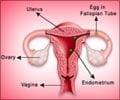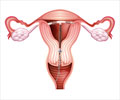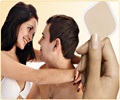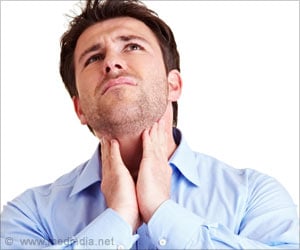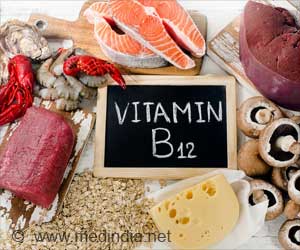Sperm motility is an important factor in eventual fertilization of the ovum or the egg.
Sperm motility is an important factor in eventual fertilization of the ovum or the egg. Most of us probably think of sperm as rather active little cells, swimming with quick movements of their "tail" or flagella.
But actually sperm's motility is in fact short lived. When in the male reproductive tract they have to rest easy, lest they wear themselves out prematurely and give up any chance of ever finding an egg.Scientists have long known that sperm's activity level depends on their internal pH. And now -- after many years of looking – researchers reporting in the February 5th issue of the journal Cell, a Cell Press publication, have finally found the channel that allows the tiny cells to rid themselves of protons. Once in the female reproductive tract, that proton release changes their internal environment from acidic to alkaline and begins their race to the finish line.
The findings offer new insight into a critical event in human fertilization and may lead to new ways of controlling male fertility, according to the researchers.
"The concentration of protons inside the [sperm] cell is 1,000 times higher than outside," said Yuriy Kirichok of the University of California, San Francisco. "If you just open a pore, protons will go outside. We identify the molecule that lets them out."
Kirichok likens the quiescent sperm cells to balloons inflated with protons instead of air. If you open a hole in the sperm, protons will readily flow out. In fact, each sperm's flagellum is covered in many so-called Hv1 proton channels, they show. When the channels are activated by external cues, the flood gates open and protons escape from many pores at once.
Kirichok said there are many conditions that open up the Hv1 pore, including alkaline conditions and the removal of zinc outside the cell. They also open when exposed to the endocannabinoid known as anandamide, a substance that is present in both the male and female reproductive tracts and that may be at particularly high levels in the vicinity of the egg.
Advertisement
"Marijuana likely activates sperm prematurely, leaving them burnt out in a matter of hours," Kirichok said.
"All of these events are essential to fertilization," Kirichok said. "You can imagine now that we know the molecule responsible we could block it to prevent activation and fertilization as a kind of male contraception." On the other hand, you might also give some sperm the extra boost they need.
Source-Eurekalert
RAS


